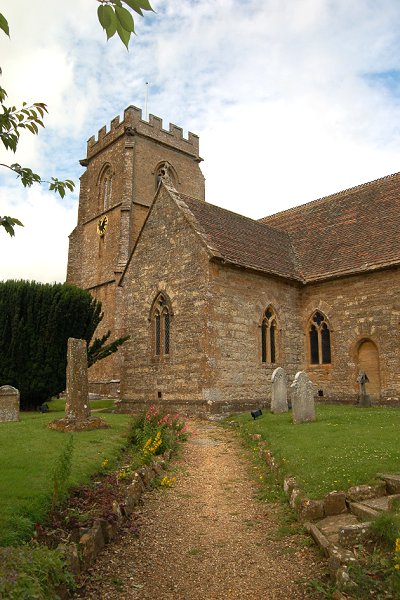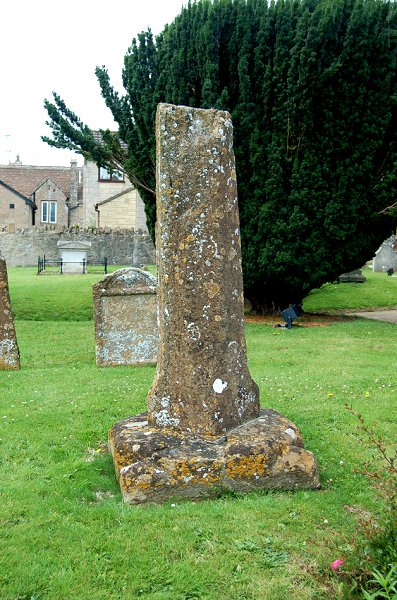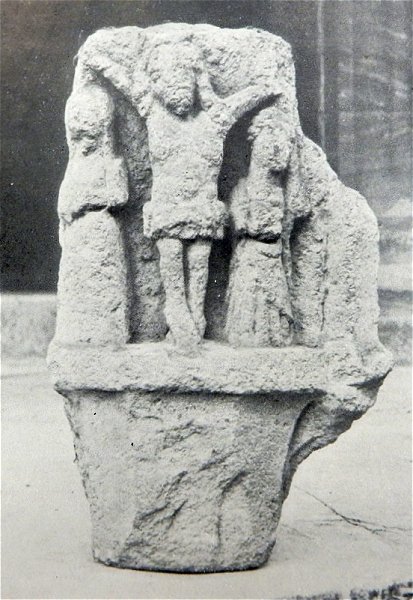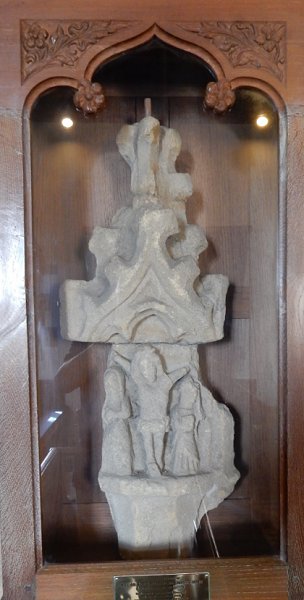Preston Plucknett Churchyard Cross
St James' Churchyard Cross
Remains of an early 15th century Churchyard Cross
St James' church in Preston Plucknett was most likely built around 1420 by John Stourton the younger (also known as Jenkyn) son of John Stourton the elder who he succeeded as Lord of the Manor. Indeed, no place of worship had existed in the area since the Monk's chapel in Preston Bermondsey had become ruinous some years before.
In 1877 C Pooley, in his Crosses of Somerset, recorded and illustrated the remains of a churchyard cross in the churchyard of St James, consisting of a socket with part of an octagonal shaft which he assigned to the early 15th century - making it all but contemporary with St James' church itself. The remains of the cross shaft survive today; the base remains in position a few metres from the South Transept, with the socket only 100mm above the soil, and somewhat worn. The shaft stands about 1.5 metres high. It is 325mm square at the base with the upper part octagonal, the chamfers are simply terminated. The cross shaft is now Grade II Listed.
Subsequently the head of the cross itself was dug up in the churchyard and was originally displayed in the church belfry. It is now displayed in in an alcove (a blocked up former doorway) in the nave. The following description of the head of the cross is from Somerset & Dorset Notes & Queries of 1917.
"The block of
Hamhill stone
consists of two
parts, an abacus
(the flat slab
on top of a
capital) and the
head. This has
two convex faces
enclosed between
buttresses set
diagonally; a
portion of one
still remains.
On one face in a
wonderful state
of preservation
is a
representation
of the
Crucifixion. The
central figure,
naked except for
a loin cloth,
has the legs
crossed and the
arms minus the
hands stretched
out on either
side, the head
with long hair
declines to the
right. The cross
itself does not
appear in the
carving. The
figures on
either side face
outward and away
from the central
figure. That of
the Virgin with
hands clasped in
front is attired
in a veil and
long garment
down to the
feet; that of St
John shows the
left hand raised
to support his
head, while the
right holds a
book in front;
the cloak is
drawn away to
the left showing
underneath the
pleated folds of
a lower garment.
The back of the
stone is quite
bare of carving
but so carefully
worked as to show
that it was
meant to be
seen. The top
and one side of
the head are
destroyed. The
total height is
16½
gallery

St James, seen from the southeast approach path. The remains of the cross shaft are seen left of the path. Photographed in 2008.

The remains of the churchyard cross in the churchyard. Photographed in 2008.

The head of the Preston Plucknett churchyard cross, photographed in 1917.

The head of the 15th century stone churchyard cross, now housed in an alcove (a blocked up former doorway) in the nave. The carving depicts the crucifixion with Christ flanked by the Virgin Mary and St John. Photographed in 2015.